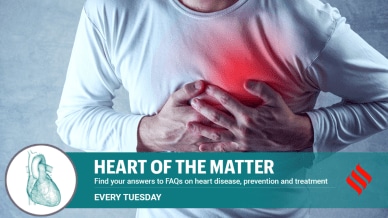32-year-old heart attack survivor returned to emergency for ECG almost every other week fearing repeat: What to expect in recovery?
The fear among young heart attack survivors is real. Almost two-thirds experience some form of anxiety

We often talk about heart attacks in young people but seldom talk about the anxiety they go through after the episode or educate them about symptoms that follow their procedures. For example, I had a 32-year-old heart attack survivor, who came back to the emergency room almost every other week, complaining of some symptom or the other. Sometimes he rushed in at night in such a state that we would do both ECG and echocardiogram to make sense of his symptoms, which were benign. His anxiety level shot through the roof, he couldn’t sleep as the fear of another heart attack kept playing in his head in a loop.
What post-heart attack patients go through
Up to six weeks after a heart attack, a patient’s pericardium or the covering layer of the heart, which bears the brunt of the heart attack and resultant trauma, remains inflamed. Most people therefore experience inflammatory symptoms like short pain pricks in the heart but not a constant heaviness. This is called the Dressler syndrome and almost all patients go through it and think they are having another heart attack.
Some patients experience heart rhythm disturbances after angioplasty because the heart muscle is stressed during the procedure. When the blood supply is suddenly restored in the blocked arteries, the heart takes some time to readjust to this flow, triggering irregular heartbeats or arrhythmia. Also, the original heart disease that led to the heart attack may still be present, causing them. Medications commonly prescribed after an angioplasty, such as beta-blockers, can affect the heart’s rhythm. Low levels of electrolytes like potassium or magnesium can trigger arrhythmia.
Sometimes the patient may not have reached the emergency in time, resulting in significant damage to the heart and scarring. This scar tissue always interferes with the heart’s electrical signals.
Should the patient undergo more tests?
More than going for an ECG on your own, listen to your cardiologist and discuss anything that you feel is not normal. We insist on strict follow-ups and cardiac rehabilitation to make sense of such symptoms. In fact, cardiac rehabilitation allows you to restore heart functionality in a medically supervised set-up with graded exercises and physical activity.
If inflammation is the problem, a blood test will show an increased white blood cell count and high levels of inflammatory markers like C-reactive protein and erythrocyte sedimentation rate. While ECG checks the heart’s electrical activity, Echo uses soundwaves to map the heart and detect fluid buildup if any. Inflammation can easily be taken care of by non-steroidal anti-inflammatory drugs (NSAIDs).
As for irregular heartbeats caused by substantial scarring, your ECG may not look normal because of the damaged tissue. What cardiologists do is study subsequent ECGs against the post-procedure one and see if there is any new damage or blockage arising.
Are any of the symptoms risky?
Most of the symptoms turn out to be benign. In some cases, excessive scar tissue can grow over the stent, the bridge mesh used to widen arteries in the first place. This leads to re-narrowing and happens within three to six months after the procedure. Which is why nobody should miss the cardiac rehabilitation programme.
Taking all prescribed medications, like aspirin and clopidogrel, is critical to prevent blood clots from forming within the stent, which could lead to another heart attack. The recovery process is significantly impacted by other health issues like high blood pressure, high cholesterol and diabetes. These should be controlled immediately with strict lifestyle choices. This means a balanced, mostly a plant diet, non-negotiable seven hours sleep, exercise and giving up both alcohol and smoking.
(Dr Shetty is lead cardiologist and medical director, Sparsh Hospital, Bengaluru)